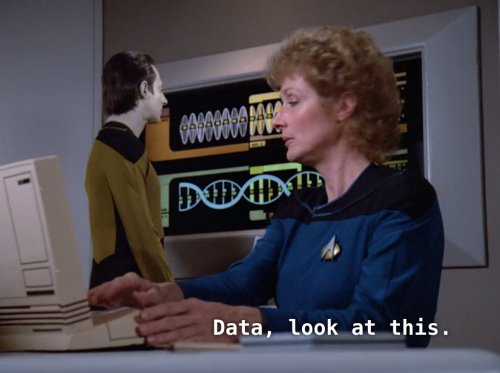Ion Propulsion…What Is It?
Ion Propulsion…What Is It?
Ion thrusters are being designed for a wide variety of missions – from keeping communications satellites in the proper position to propelling spacecraft throughout our solar system. But, what exactly is ion propulsion and how does an ion thruster work? Great question! Let’s take a look:

Regular rocket engines: You take a gas and you heat it up, or put it under pressure, and you push it out of the rocket nozzle, and the action of the gas going out of the nozzle causes a reaction that pushes the spacecraft in the other direction.
Ion engines: Instead of heating the gas up or putting it under pressure, we give the gas xenon a little electric charge, then they’re called ions, and we use a big voltage to accelerate the xenon ions through this metal grid and we shoot them out of the engine at up to 90,000 miles per hour.

Something interesting about ion engines is that it pushes on the spacecraft as hard as a single piece of paper pushes on your hand while holding it. In the zero gravity, frictionless, environment of space, gradually the effect of this thrust builds up. Our Dawn spacecraft uses ion engines, and is the first spacecraft to orbit two objects in the asteroid belt between Mars and Jupiter.
To give you a better idea, at full throttle, it would take our Dawn spacecraft four days to accelerate from zero to sixty miles per hour. That may sounds VERY slow, but instead of thrusting for four days, if we thrust for a week or a year as Dawn already has for almost five years, you can build up fantastically high velocity.

Why use ion engines? This type of propulsion give us the maneuverability to go into orbit and after we’ve been there for awhile, we can leave orbit and go on to another destination and do the same thing.
As the commercial applications for electric propulsion grow because of its ability to extend the operational life of satellites and to reduce launch and operation costs, we are involved in work on two different ion thrusters of the future: the NASA Evolutionary Xenon Thruster (NEXT) and the Annular Engine. These new engines will help reduce mission cost and trip time, while also traveling at higher power levels.
Learn more about ion propulsion HERE.
Make sure to follow us on Tumblr for your regular dose of space: http://nasa.tumblr.com
More Posts from Suvinara-the-lynx-blog and Others

The demise of Vine is drawing closer. I couldn’t stand the thought of all those cat videos out there being lost to the abyss, so I gathered a few (i.e. nearly 50) of my favourites.
I hope you enjoy this compilation of cats and kittens being funny, silly, or just plain adorable.


















A WEAPON TO SURPASS METAL GEAR

speaking of art history
this is Undine by Chauncey Bradley Ives. she’s at the Smithsonian.

and this is her from the back

that is marble, y’all.
MARBLE.
carved so thin you can SEE THE LIGHT THROUGH IT.
i just.
wow.
fucking art, y’all.
fucking.
art.
do you ever just get mad bc you’re spending your only teenage years feeling like you want to jump off a cliff while others are having the time of their lives, being in love, being good at things and you’re just kind of there

At the doctors for a consultation about hrt.. my anxiety is really giving me the frighten :s
-
 alustlust-blog liked this · 1 year ago
alustlust-blog liked this · 1 year ago -
 lapislantern reblogged this · 4 years ago
lapislantern reblogged this · 4 years ago -
 lapislantern liked this · 4 years ago
lapislantern liked this · 4 years ago -
 the-shadows-request-candy-corn reblogged this · 5 years ago
the-shadows-request-candy-corn reblogged this · 5 years ago -
 the-shadows-request-candy-corn liked this · 5 years ago
the-shadows-request-candy-corn liked this · 5 years ago -
 groochi-gang reblogged this · 5 years ago
groochi-gang reblogged this · 5 years ago -
 becks-specs liked this · 5 years ago
becks-specs liked this · 5 years ago -
 superlucyjin reblogged this · 5 years ago
superlucyjin reblogged this · 5 years ago -
 anxvu reblogged this · 6 years ago
anxvu reblogged this · 6 years ago -
 anxvu liked this · 6 years ago
anxvu liked this · 6 years ago -
 iamjustadogbaby reblogged this · 6 years ago
iamjustadogbaby reblogged this · 6 years ago -
 rivers-full-of-liquor liked this · 6 years ago
rivers-full-of-liquor liked this · 6 years ago -
 elevationsquared-blog reblogged this · 7 years ago
elevationsquared-blog reblogged this · 7 years ago -
 arccrumb liked this · 7 years ago
arccrumb liked this · 7 years ago -
 ancastoica reblogged this · 7 years ago
ancastoica reblogged this · 7 years ago -
 thamit reblogged this · 8 years ago
thamit reblogged this · 8 years ago -
 thamit liked this · 8 years ago
thamit liked this · 8 years ago -
 lilithaluciferis reblogged this · 8 years ago
lilithaluciferis reblogged this · 8 years ago -
 animationfan69 reblogged this · 8 years ago
animationfan69 reblogged this · 8 years ago -
 artemis-the-changeling reblogged this · 8 years ago
artemis-the-changeling reblogged this · 8 years ago -
 littleredd1333 liked this · 8 years ago
littleredd1333 liked this · 8 years ago -
 prussian-grenadier liked this · 8 years ago
prussian-grenadier liked this · 8 years ago -
 thallisphp liked this · 8 years ago
thallisphp liked this · 8 years ago -
 musashidj liked this · 8 years ago
musashidj liked this · 8 years ago -
 oxxxxc1zzzzzzzzzzzzz7 liked this · 8 years ago
oxxxxc1zzzzzzzzzzzzz7 liked this · 8 years ago -
 thatoneswimmercarl liked this · 8 years ago
thatoneswimmercarl liked this · 8 years ago -
 suvinara-the-lynx-blog reblogged this · 8 years ago
suvinara-the-lynx-blog reblogged this · 8 years ago -
 suvinara-the-lynx-blog liked this · 8 years ago
suvinara-the-lynx-blog liked this · 8 years ago -
 jpaynee4 reblogged this · 8 years ago
jpaynee4 reblogged this · 8 years ago -
 jpaynee4 liked this · 8 years ago
jpaynee4 liked this · 8 years ago -
 kissmeagainarthas reblogged this · 8 years ago
kissmeagainarthas reblogged this · 8 years ago -
 your-average-joke liked this · 8 years ago
your-average-joke liked this · 8 years ago -
 shadowedseas reblogged this · 8 years ago
shadowedseas reblogged this · 8 years ago -
 flyingblueh reblogged this · 8 years ago
flyingblueh reblogged this · 8 years ago -
 likewyoming reblogged this · 8 years ago
likewyoming reblogged this · 8 years ago -
 elleofthestars-blog liked this · 8 years ago
elleofthestars-blog liked this · 8 years ago
"Hi there, I am a 25 year old NB lynx, I am Australian and suffer from some pretty decent chronic anxiety and depression issues.. this is where i just talk about, post and share random stuff c: all porn plogs can fuck off kindly and dont follow me please."
214 posts